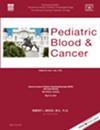Dental Health of Childhood Cancer Survivors—A Report From the Swiss Childhood Cancer Survivor Study (SCCSS)
Abstract
Background
Cancer and its treatments can affect dental health of childhood cancer survivors. We aimed to evaluate the prevalence of dental problems in survivors, compare them to their siblings, and investigate cancer-related risk factors.
Methods
As part of the population-based Swiss Childhood Cancer Survivor Study, we sent questionnaires inquiring about dental problems to survivors aged 5–19 years and their siblings. We retrieved cancer-relevant information from the Swiss Childhood Cancer Registry and used logistic regressions to compare dental problems between survivors and siblings and to investigate cancer-related risk factors.
Results
We included 735 survivors and 144 siblings. Almost half of survivors and siblings reported at least one dental problem. Compared to siblings, CCS might be more likely to have hypo- or microdontia (odds ratio [OR] 1.7; 95% CI: 0.9–3.2) and enamel hypoplasia (2.2; 0.8–6.0), but seem to be similarly likely to have cavities or cavity-related tooth loss (0.8; 0.6–1.3). Chemotherapy was associated with enamel hypoplasia (3.0; 1.2–10.4), cavities or cavity-related tooth loss (1.5; 1.0–2.3), and gum problems during (23.0; 9.4–76.2) and after (4.6; 2.0–13.5) treatment. Hematopoietic stem cell transplantation (HSCT) was related to hypo- or microdontia (5.4; 2.6–10.7), cavities or cavity-related tooth loss (2.1; 1.2–3.6), and gum problems during treatment (2.0; 1.2–3.6). For hypo- or microdontia and cavities, associations with treatment were driven by patients diagnosed before the age of 5 years.
Conclusion
Childhood cancer survivors treated with chemotherapy or HSCT, especially at a young age, might be more likely to have dental problems. Regular dental check-ups guided by healthcare teams and dental hygiene habits can mitigate risks and promote survivor's long-term dental health.

 求助内容:
求助内容: 应助结果提醒方式:
应助结果提醒方式:


